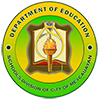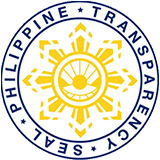It is imperative to ensure that all school personnel understand the legal implications of their actions, particularly when it comes to handling public funds. Dishonesty in any form is a grave offense that must be taken seriously. The case of Ma. Luisa R. Loreño highlights that accountability is not determined by one’s title or position, continue reading : DISHONESTY
CHILD ABUSE
Child abuse is a heinous crime that must be condemned by all members of society. It is especially disturbing when a teacher, who is entrusted with the education and well-being of their students, is the perpetrator of such abuse. In the case of Malcampo-Repollo, Maximo Estrella Elementary School teacher, her physical maltreatment of her minor continue reading : CHILD ABUSE
HABITUAL TARDINESS
Any employee shall be considered habitually tardy if he incurs tardiness, regardless of the number of minutes, ten (10) times a month for at least two (2) months in a semester or at least two (2) consecutive months during the year. MC NO. 23, s. 1998-Civil Service Commission. Punctuality is an essential aspect of professionalism, continue reading : HABITUAL TARDINESS
Another Side of Being a Teacher: Teacher Leader
The role of a teacher as a leader is multifaceted and encompasses various aspects. Teachers demonstrate leadership by fostering collaboration among colleagues and creating a positive work environment. They actively participate in professional learning communities, share best practices, and contribute to the growth and development of the teaching profession. They collaborate with other educators, administrators, continue reading : Another Side of Being a Teacher: Teacher Leader
Heart, Head, and Hands: Teachers’ Contributions
Teachers make numerous contributions to society and play a vital role in shaping the lives of individuals and communities. They are people who can bring out the best in every learner. They are natural leaders who can contribute to any institution, group, or community. In the context of the teachers’ direct interaction with learners, colleagues, continue reading : Heart, Head, and Hands: Teachers’ Contributions
Puso sa Pagtuturo
I Sa pagsilip ng haring araw tuwing umaga Hatid nito’y saya at panibagong pag-asa Babangon at maghahanda para sa mga bata Bilang isang guro maglilingkod na masaya. II Mga gawain at paghahanda di alintana Alinlangan at pandemya man di nagpahina Patuloy na pinalalago ang kasanayan Para sa bagong kakayahan at kaalaman. III Ang continue reading : Puso sa Pagtuturo
Online Learning vs Face-to-Face Learning:
Exploring the Advantages and Disadvantages of the Two Forms of Education During the COVID-19 Pandemic, the traditional education system was entirely reformed as it shifted towards online learning. This reform has brought several benefits but has caused disadvantages among students as well. According to Naveed et al. (2017), online learning offers convenience, flexibility in continue reading : Online Learning vs Face-to-Face Learning:
IMPACT OF CORONAVIRUS PANDEMIC ON EDUCATION
Face-to-face learning has been the standard way of instruction for centuries. While online instruction is becoming increasingly popular, in-person study may still be the best option for some people. With face-to-face learning, teachers are better able to gauge the understanding and interest of students. It is also easier to hold students accountable. While online learning continue reading : IMPACT OF CORONAVIRUS PANDEMIC ON EDUCATION
“PHILIPPINES: BEAUTY AND TRAGEDY IN A CHANGING WORLD”
Climate Change and Global Warming Amidst the diverse forests and blue seas, Lies a land of tropic and grace, The Philippines, a nation of beauty, But also of human and nature’s tragedy. The human population in the country abounds Increasing pollution penetrates like sound The air they breathe, the water they drink, Polluted continue reading : “PHILIPPINES: BEAUTY AND TRAGEDY IN A CHANGING WORLD”
“Differentiated Instruction for Unity in Diversity: Meeting the Unique Needs of Every Student”
Every student is unique, with their own set of learning needs, interests, and strengths. However, traditional classroom instruction often fails to account for these differences, leading some students to feel left behind or unchallenged. To address this issue, educators have been exploring differentiated instruction, an approach that tailors teaching to the individual needs of each continue reading : “Differentiated Instruction for Unity in Diversity: Meeting the Unique Needs of Every Student”


